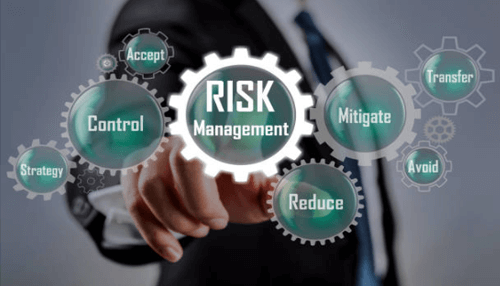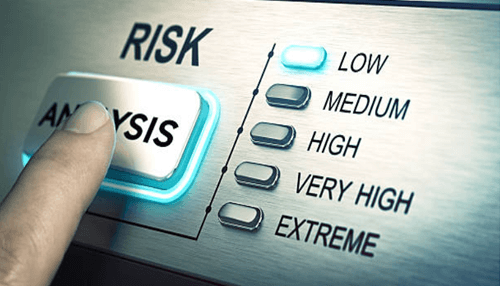Every company has to go through some risks in its operations that require more attention to overcome them effectively. An organization should evaluate the risks in detail which can help plan important activities with ease. The risk management process is a framework that aims at finding solutions for problems with actions. There are five steps involved in the process and organizations should follow them properly. This will help a lot to accomplish goals while carrying out daily tasks in a company.
5 steps of the risk management process
#1 Identifying the risk management process
The first step in risk management is identifying risks faced by an organization. A firm can face risks such as strategic risks, regulatory risks, market risks, compliance risks, and operational risks. Therefore, an organization should know them with more attention. Organizations should consider using a breakdown structure to list out the potential risks accurately. This visual allows a company to know where risks are mitigated in a project.
In addition, the development or maintenance of a project risk register plays a critical position in empowering a company to effectively address any challenges that may arise. By implementing this tool, groups are provided with a based approach to identifying and managing capacity dangers, which in the end enhances their capability to navigate uncertainties with performance.
Furthermore, the important thing benefit of making use of a risk register lies in its ability to provide stakeholders with a clear and comprehensive review of the diagnosed dangers, facilitating a deeper knowledge of the capability influences. Additionally, via the usage of this technique, undertaking groups can proactively evaluate and mitigate feasible threats, making an allowance for activating resolution and making sure of easy project operations.
#2 Analyzing the risk management process
In the second phase of risk management, the essential challenge of analyzing risks takes center stage, serving as a crucial device in identifying underlying reasons behind attention-associated issues. At this juncture, a specialized team is tasked with meticulously assessing the possible ramifications related to each risk, enabling them to prioritize effectively.
Furthermore, a corporation devotes sizeable assets to delving into the elaborate nature of those risks, scrutinizing their ability to affect the organization’s normal growth trajectory with precision and foresight. By dedicating effort and time to comprehensively understand these dangers, an enterprise equips itself with the necessary insights to proactively mitigate ability challenges and pave the manner for sustainable success.
Another important thing to consider is the various methods a company can make use of to identify and assess risks effectively. By exploring specific strategies and tools, companies can advantage of valuable insights to better cope with and mitigate capability problems. It is important for corporations to cautiously evaluate particular factors throughout this system that allows them to develop techniques for overcoming problems.
These elements might also embody the quantity of time that might be impacted, the ability of economic repercussions, the severity of the results, and the resources available to correctly manipulate and reduce risks. It is through thorough attention to these elements that companies can develop complete risk management plans to safeguard their operations and ensure their long-term achievement.
Risk analysis performs an important role in allowing groups to comprehensively recognize the complex connection between ability risks and the numerous elements that have the capability to affect everyday operations in a potentially adverse manner. This manner is crucial for businesses to proactively control and mitigate risks effectively.
#3 Evaluating or ranking the risks
In the process of risk management, it is essential for an enterprise to meticulously examine and classify risks with the aid of prioritizing them based totally on their severity. By categorizing dangers into various tiers of impact, which include catastrophic risks that pose the maximum enormous chance and dangers inflicting minor inconveniences, the organization profits comprehensive know-how of potential vulnerabilities.
This dependent technique allows choice-makers to allocate assets effectively and take proactive measures to address excessive-priority risks directly. Prioritizing dangers in this manner not only ensures that crucial problems are addressed right away but also allows for a scientific evaluation of the wider chance landscape, facilitating strategic choice-making and effective hazard mitigation strategies.
Consequently, ranking risks as of importance fosters a proactive risk management lifestyle inside the organization, promoting resilience and safeguarding against capability threats.
#4 Treating the risks
One of the critical aspects of effective risk management is identifying and addressing risks promptly to mitigate any potential negative impacts on businesses. This proactive approach allows organizations to anticipate and eliminate potential risks early on, safeguarding their operations and financial stability.
Engaging expert teams specialized in risk assessment ensures a thorough analysis of potential threats and helps in developing tailored risk management plans to mitigate them effectively. By involving such teams in the risk management process, organizations can enhance their resilience and ensure long-term success.
Team members should collaborate closely with every stakeholder, engaging in detailed discussions to address the issues effectively. Similarly, the company ought to dedicate efforts toward conducting similar engagements within a manual setting. This way, both parties can thoroughly explore concerns and develop strategies for successful outcomes.
Throughout the the risk management process, stakeholders can be frequently notified approximately crucial developments. This non-stop go-with-the-flow of records empowers them to make nicely-informed decisions which are important for the employer’s success. Additionally, by way of leveraging risk management solution, the employer can proactively lay out and enforce comprehensive risk mitigation strategies, broaden powerful contingency plans, and set up preventive measures to shield in opposition to potential threats.
#5 Monitoring and reviewing the risks
In any organization, it’s far important to understand that absolute danger elimination is not possible due to the constantly evolving enterprise landscape. Engaging in a radical threat control method empowers corporations to effectively navigate and mitigate various risks at the side of skilled experts. This method becomes increasingly important in a digital environment, in which structures and records are liable to a myriad of threats.
Leveraging superior technologies and tools, along with computers, enhances the corporation’s potential to ensure the seamless continuity of operations. By continually tracking and comparing the whole chance framework, corporations can’t handiest bolster their resilience but also elevate their ordinary overall performance requirements to acquire sustained success and operational excellence.



